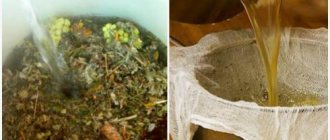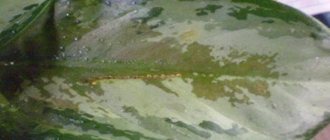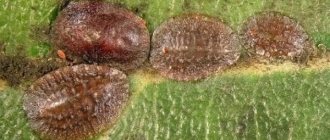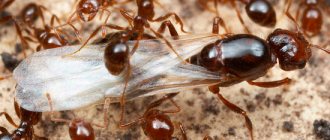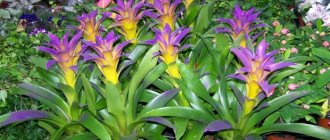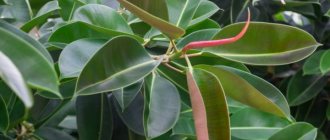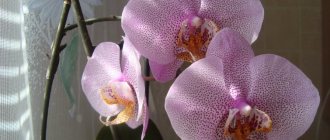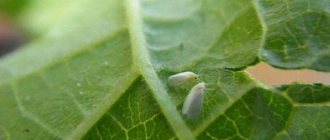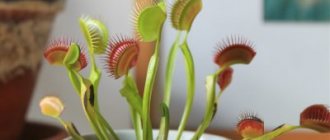Insectivorous plants - popular species, care
Plants that are capable of catching and eating insects and small animals are of extreme interest and surprise. And lovers of indoor flowers definitely try to purchase these flowers in their collections.
In nature, predator plants are found on almost all continents. They belong to 19 different families. Currently, about 630 species of these amazing creatures have been described. Most of them come from tropical areas, but there are species that feel quite comfortable in cooler regions.
So, even in the swamps near Moscow you can find round-leaved sundew (Drosera rotundifolia)
, and
the American purple sarracenia (Sarracenia purpurea)
has long been established in England and Ireland.
Sarracenia purpurea
The first descriptions of plants capable of feeding themselves by hunting appeared in the 18th century. They were compiled by the English naturalist John Ellis. The discovery was so unexpected that even many scientists of that time perceived the information with distrust.
Why did plants switch to animal food?
A plant that eats insects has evolutionarily changed its diet not because of a good life. All species of these carnivores grow on soils lacking nitrogen and other useful substances. It is very difficult for them to survive on sandy soils or peat, so some species have adapted to life thanks to the ability to digest animal protein. It is animal food that can completely renew reserves of nitrogen and minerals.
Plants use various traps to catch prey. In addition, all plant predators are distinguished by their bright colors and attractive smell, which insects associate with nectar-bearing flowers. But do not forget that animal food is only “vitamins” for plants, and the main nutrition for them is photosynthesis.
Varieties of carnivorous plants
To date, scientists have described about 500 species of carnivorous plants that belong to 19 families. We can conclude that the evolutionary development of these groups of organisms occurred in parallel and independently.
The most famous plants that eat insects:
- sarracenia;
- genliseya;
- Darlingtonia;
- pemphigus;
- butterwort;
- sundew;
- biblis;
- Aldrovanda vesica;
- Venus flytrap.
Interesting fact: flycatchers have the Latin name muscipula, which translated into Russian does not mean “flytrap”, but “mousetrap”.
How do carnivorous plants hunt?
Snapdragon
There are three main strategies.
As a rule, one of them is followed by plants that can be classified as predators. Some of them lure insects into pitchers using sweet odors. The insect drowns in the sticky contents of such a jug, or its exit is blocked by the lid. This type of hunting is the most common among plants. But pitchers are modified leaves - they should not be confused with flowers. They secrete the necessary juices - both sticky and digestive. Interesting fact: carnivorous plants that hunt according to this principle are neither exotic nor rare.
Even an ordinary snapdragon is capable of catching small insects that land on the edge of a flower, under their weight it opens access inside, crawling inside, the insect is deprived of the opportunity to come back out. However, the pharynx does not do this for food; it is a side part of the mechanism for increasing the efficiency of pollination. In other cases, the plant has sticky leaves, and the insect simply sticks to them - this is how the sundew works, which grows in poor marshy soils and supplements its “diet” with insects. There is also a third option - when the plant has leaves - traps that react to the touch of an insect and slam shut. This is, for example, a Venus trap, and this hunting strategy is considered active.
Interesting: Edible and inedible plants in the forest
Venus flytrap
The Venus flytrap is considered a classic example of a carnivorous plant, although it is not widespread in nature and lives in a very limited area in the United States. True, today this plant has become so popular that it is grown in pots and bought for home use. The flycatcher blooms with white flowers, but its main advantage is its green leaves with eyelashes on each and additional tactile organs. If one of them is touched twice or thrice, the sheet will slam shut.
The flycatcher is the most famous plant, but there are many less popular ones. In total, there are about 500 varieties of insectivorous plants on the planet, and all of them are able to obtain food partly from the soil, partly from captured insects.
Prevalence of entomophagous plants
Carnivorous plants are not only exotic representatives of the biosphere. They are found everywhere - from the equator to the Arctic. Most often you can stumble upon them in damp places, especially in swamps. Most species have been recorded in the southwestern part of Australia. Some species are eurybionts and grow in many biocenoses. The range of other species is more limited - for example, the Venus flytrap is found in nature exclusively in South and North Carolina.
What species grow in Russia
In Russia there are 13 species of carnivorous plants from 4 genera. The genus Sundew is represented by two species: common sundew and English sundew. They grow mainly in sphagnum bogs. Aldrovanda bladderwort is found both in the European part of the Russian Federation and in the Far East and the Caucasus.
The Pemphigus genus in Russia is represented by four species, the most common of which is Pemphigus vulgaris. These are aquatic plants that differ in their growth rate. They are found in shallow waters throughout Russia (with the exception of the Far North). Also in our area you can find representatives of the Zhiryanka genus, which grow in swamps, stream banks, and some on trees and mosses.
Types of Trap Organs
Predators catch their victims using trap organs, which, depending on the species, are of several types:
- pitcher leaves. This design has a lid and the inside is filled with water (Nepenthes, Darlingtonia);
- leaves-traps. The modified leaf consists of two valves with teeth on the edges. When the insect is inside, the valves close (Venus flytrap);
- Velcro leaves. On the leaf plates there are special hairs that secrete a sticky secretion that attracts insects (sundew, butterwort);
- suction traps. Water along with the victim is sucked under pressure into a special bubble (pemphigus);
- crab claw traps. Victims easily fall into them, but cannot get out because of the hairs growing forward in a spiral (genlisea).
Terrarium
Small species such as sundew
or
Venus flytrap
, it is better to place it in a terrarium.
For large plants, such as nepenthes
, it would be a good idea to purchase a humidifier or place a tray of pebbles filled with water next to them. At the same time, heat combined with constant high humidity can cause fungal infections.
All green predators are light-loving, but they need to be shaded from direct sunlight. Insectivorous plants require very high air humidity. If kept too dry, they are easily affected by aphids and mealybugs.
To reduce the risk of disease, plants need to be provided with fresh air. Cold drafts should be avoided, especially in autumn and winter. It is also necessary to promptly remove wilted leaves and flowers.
Keeping at home
The following types of carnivorous plants can be kept at home:
- Venus flytrap;
- all types of sundews;
- tropical fatworts;
- sarracenia;
- dwarf nepenthes.
In Russia, the most popular indoor predator is the Venus flytrap. The flower pot should be kept on a well-lit windowsill or on a table with artificial lighting. The indoor air temperature in summer should be between 18–25 °C, and in winter – 10–13 °C. Since the flytrap is a moisture-loving plant, the soil in the pot must be constantly moistened. The plant should be watered with clean rain or melt water.
Reproduction
Flycatchers reproduce by cuttings, dividing the bush and through cross-pollination. The flowering period of Dionaea begins in late spring. In natural biocenoses, the plant is pollinated by insects. At home, flowers need to be pollinated by hand, transferring pollen from the stamens to the stigma with a soft brush.
Top dressing
If a plant is called carnivorous, this does not mean at all that it needs to be fed meat. The flycatcher itself must hunt small insects in order to fully digest food and obtain the necessary substances. Also, do not forget that Dionaea receives its main nutrition from the ground.
Care during the rest period
During the cold season, the Venus flytrap stops its growth and falls into suspended animation. At some point it may even seem to you that the plant is dying. But this is not so, dionaea needs this condition to gain strength for the next growing season. At this time, your task will be to remove withered leaves and wait for new ones to grow.
Venus flytrap care
Caring for a Venus flytrap at home is not at all difficult. It grows well in poor, acidic substrates with good water permeability.
The plant is sensitive to salinity, so it does not need fertilizers, and alkaline soils contribute to its death.
Light
Dionaea prefers bright, diffused light for at least 4 hours a day and does not like shade. Just do not place the flowerpot in direct sunlight in the summer, especially if your flower lives in a paludarium. The soil in these conditions can become so hot that it will quickly kill your pet.
In indoor conditions it grows well on east and west windows or under artificial fluorescent light. If the color of Dionaea's traps has become dull, and the leaves are thin and elongated, it means that the flower is not receiving enough sunlight.
Watering a Venus flytrap
Never water your Venus flytrap with tap or bottled water, as these contain too many additional compounds that can be harmful to the plant. The ideal option is rain, distilled or filtered water.
The mystery of the blue phalaenopsis
Monitor soil and air moisture, but do not let water stagnate in the flowerpot. For all its moisture-loving nature, Dionea cannot tolerate stagnation of water, which causes the development of root rot.
You can pour water into the tray to a height of 2 cm - the flower itself will regulate the supply of moisture. Good air circulation is also important. In summer, the plant can be taken out into the open air, to a place protected from direct sunlight.
Feeding a Venus flytrap - video
What to feed a Venus flytrap? Although carnivorous flowers can catch and digest insects and sometimes small animals, they get their food and energy from the sun. These are plants, which means they can carry out photosynthesis. Sunlight for several hours a day is much more important to them than feeding on flies and mosquitoes.
At home, the Venus flytrap can be fed no more than once every 7-10 days and only one or two traps. A good feeding cycle for optimal growth is once every two weeks.
The prey must be alive so that it can move and irritate the hairs, triggers that are extremely sensitive to movement.
Red Venus flytrap Red Dragon
As soon as the hairs touch each other twice, the trap will work and will be closed for several days until the prey is completely digested, leaving only a chitinous shell.
Keep an eye on the size of the insects. They must fit freely in the traps so that the valves can close tightly and infection does not get there.
When growing Dionaea in a paludarium, the easiest feeding method is to release small midges or mosquitoes inside the space. The plant itself will decide when to have lunch.
If the shutters are triggered frequently, the trap will die, since the flower requires a large amount of energy for this action. In this case, it should be carefully cut so that new shoots can develop.
Dionaea variety Alien
Do not feed Dionea if:
- weakened or sick;
- donkey in too wet conditions and not enough sun;
- it was recently replanted and the roots have not yet adapted to the new soil;
- experienced stress from any cause, including sunburn or overfertilization of the soil;
- In addition, flycatchers, as a rule, eat almost no insects during their annual winter dormancy.
Although the plant is carnivorous, it can survive without live food for a long period of time - a month or two.
